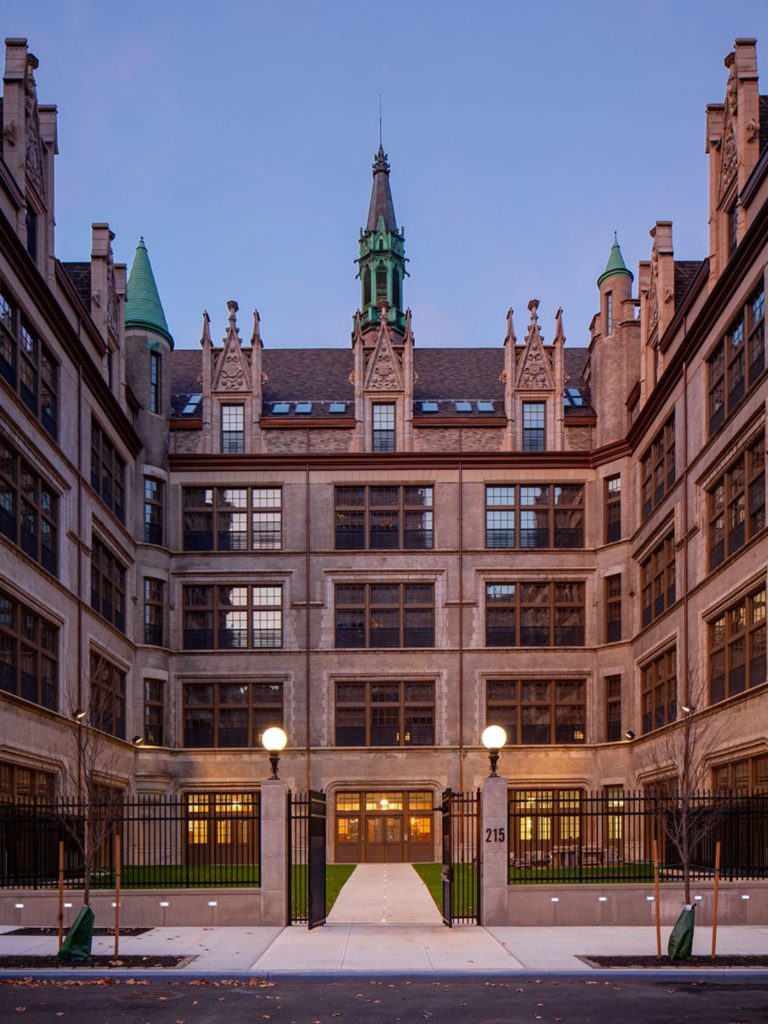What is Fire-Rated Glass?
Fire-rated glass is a specialized type of glass designed to withstand extreme temperatures and prevent the spread of flames and smoke during a fire. It is an integral part of fire protection systems in modern buildings.
Understanding the Composition and Functionality
Th glass in fire rated windows is made from materials that can withstand high heat without breaking or losing integrity. This type of glass is not just a single product; it encompasses a range of glazing solutions, each tailored to specific fire safety requirements.
The Role of Fire-Rated Glass in Building Safety
The primary function of fire-rated glass is to provide a barrier against flames and smoke, while still allowing visibility and light transfer. This functionality is crucial in helping occupants safely evacuate a building during a fire emergency.
Why is Fire-Rated Glass Crucial in Building Design?
Incorporating fire-rated glass in building design is not just a matter of compliance; it’s a commitment to safety and functionality.
Meeting Building Code Requirements
Building codes globally require the use of fire-rated materials, including glass, in certain areas of a structure. Fire-rated glass helps architects and builders meet these requirements, ensuring that buildings are safe for occupants.
Enhancing Occupant Safety and Fire Response
The use of fire-rated glass in strategic locations can significantly enhance the safety of a building’s occupants by preventing the rapid spread of fire and smoke. This allows more time for evacuation and for firefighters to respond effectively.

Types of Fire-Rated Glass: Understanding the Differences
There are various types of fire-rated glass, each serving a different purpose and offering varying levels of protection.
Wired and Tempered Fire-Rated Glass
Wired glass has been a traditional choice for fire-rated applications, but advancements have led to the development of more effective solutions like tempered glass. Each type has its own set of characteristics and fire protection capabilities.
The Advantages of New Technical Glass Products
Technical glass products have revolutionized the fire-rated glass market, offering solutions that provide higher levels of safety and functionality. These advanced products can withstand higher temperatures and longer exposure to fire, making them ideal for critical applications.
Fire-Rated Glass and Egress: A Vital Safety Consideration
The integration of fire-rated glass in egress routes is a critical aspect of building safety.
Ensuring Safe Evacuation Routes
In a fire emergency, maintaining the integrity of evacuation routes is essential. Fire-rated glass plays a key role in ensuring that these paths remain clear and protected from fire and smoke.
Balancing Fire Safety with Accessibility
While fire-rated glass provides necessary protection, it must also comply with accessibility standards to ensure that all building occupants, including those with disabilities, can safely evacuate.
How is Fire-Rated Glass Tested and Certified?
Understanding the testing and certification process for fire-rated glass is crucial for ensuring compliance and safety.
The Rigorous Testing Process
Fire-rated glass undergoes stringent testing, including exposure to extreme heat and flames in controlled conditions. Tests like ASTM E119 and UL 10C determine the duration for which the glass can withstand fire without failing.
Certifications and Standards
Once tested, fire-rated glass must meet specific standards to be certified for use. These certifications, often issued by organizations like UL (Underwriters Laboratories) and ASTM (American Society for Testing and Materials), are essential for architects and builders to ensure the products they use comply with building codes.
Installation Considerations for Fire-Rated Glass
The correct installation of fire-rated glass is as important as its manufacturing and testing.
Professional Installation is Key
Due to the technical nature of fire-rated glass, professional installation is essential. This ensures that the glass performs as expected in a fire situation.
Compatibility with Fire Door Assemblies and Frames
Fire-rated glass must be compatible with the door assemblies and frames in which it is installed. The entire assembly must be rated to provide the intended level of fire protection.
Design Aesthetics and Fire-Rated Glass: Balancing Safety with Style
Integrating fire-rated glass into a building’s design can enhance both safety and aesthetics.
The Evolution of Fire-Rated Glass Design
Gone are the days when fire-rated glass was merely functional without consideration for design. Modern fire-rated glass comes in various styles and finishes, allowing for creative and attractive design solutions.
Architectural Applications
Architects can use fire-rated glass in numerous ways, from partition walls to doors and windows, blending safety with architectural beauty.
Fire-Rated Glass in Doors and Frames: A Comprehensive Guide
Choosing the right fire-rated glass for doors and frames is critical for compliance and safety.
Understanding the Specific Requirements
Each application may have different fire safety requirements. For instance, glass doors in high-risk areas might need higher-rated glass compared to other areas.
Selection and Installation Criteria
Selecting the right type of fire-rated glass for doors and frames involves understanding the building code requirements and the specific fire safety needs of the building.
Maintenance and Inspection of Fire-Rated Glass Systems
Regular maintenance and inspection are vital to ensure the continued effectiveness of fire-rated glass.
Importance of Regular Inspections
Regular inspections help identify any potential issues with the fire-rated glass system, ensuring that it remains compliant and functional.
Maintenance Best Practices
Proper maintenance includes regular cleaning, checking for damages or alterations, and ensuring that any replacement or repair work is up to standards.
Future Trends and Innovations in Fire-Rated Glass Technology
The field of fire-rated glass is constantly evolving, with new technologies and products emerging.
Innovations in Fire-Rated Glass
Advancements in materials and manufacturing techniques are leading to more efficient and versatile fire-rated glass products.
The Future of Fire Safety in Architecture
The future of fire-rated glass lies in its integration into smart building systems and the development of products that offer even greater levels of protection and functionality.
Key Takeaways
- Fire-rated glass is essential for fire safety and compliance.
- Various types of fire-rated glass cater to different safety requirements.
- Proper installation and maintenance are crucial for effectiveness.
- Innovations in fire-rated glass are enhancing safety and design possibilities.
FAQ
Q: What is fire-rated glass?
A: Fire-rated glass is a type of glass specifically designed and tested to maintain its integrity and provide protection against the passage of flames, smoke, and heat during a fire.
Q: How does fire-rated glass work?
A: Fire-rated glass works by resisting the passage of flames and smoke, as well as maintaining its structural integrity when exposed to high temperatures during a fire. It helps in compartmentalizing fire and providing safe egress routes.
Q: What are the different types of fire-rated glass?
A: There are various types of fire-rated glass, including fire-protective glass, fire-resistive glass, and fire-rated impact safety glass, each offering different levels of protection and performance under fire conditions.
Q: What types of fires can fire-rated glass withstand?
A: Fire-rated glass is designed to withstand various types of fires, including standard fire exposure, as well as radiant heat, conductive heat, and impact, depending on the specific type and rating of the glass.
Q: Is fire-rated glass suitable for commercial use?
A: Yes, fire-rated glass is commonly used in commercial buildings to meet safety and compliance requirements, providing protection and safe egress routes in the event of a fire.
Q: How is fire-rated glass tested for safety and compliance?
A: Fire-rated glass is rigorously tested according to standards such as UL 263, NFPA, and other relevant codes to evaluate its performance under fire conditions, including exposure to heat, impact, and hose stream testing.
Q: What are some important considerations when installing fire-rated glass?
A: When installing fire-rated glass, it’s important to consider factors such as door hardware, rated assemblies, temperature rise, and compliance with building codes and regulations to ensure proper functionality and safety.
Q: Can fire-rated glass be used in doors and windows?
A: Yes, fire-rated glass can be used in doors, windows, and other glazed openings, providing transparent barriers that maintain fire ratings while allowing visibility and natural light transmission.
Q: What organizations provide certifications for fire-rated glass?
A: Organizations such as UL (Underwriters Laboratories), the National Glass Association, and the AIA (American Institute of Architects) provide certifications and standards for fire-rated glass products to ensure their performance and compliance.
Q: What are the benefits of using fire-rated glass?
A: Using fire-rated glass offers benefits such as enhanced safety, compliance with building regulations, improved aesthetics, and the ability to create open, light-filled spaces while maintaining fire protection and safety. It is the best choice for ultimate safety and compliance.



